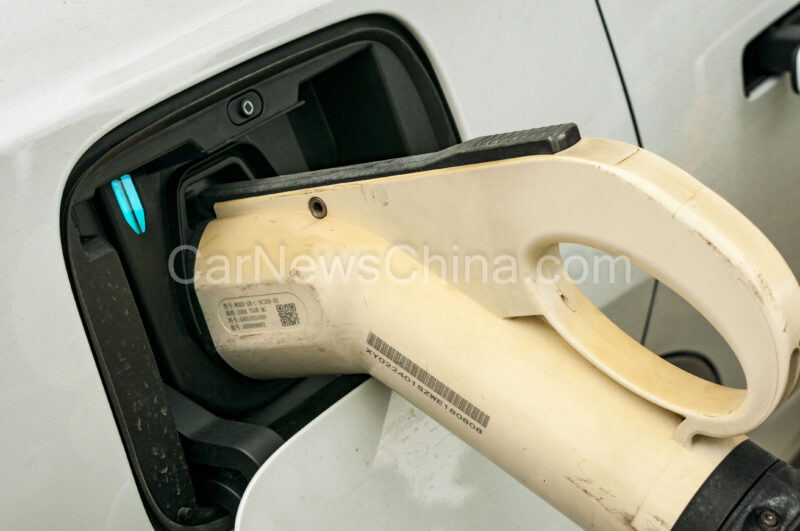China has just finished its official Chinese New Year holiday period which explains the limited amount of news on Car News China last week. While all the OEMs and their employees were enjoying a well-earned break there were many stories emerging about the experiences of people road tripping in China using EVs. And so in a break from the usual kind of articles we bring you here are some of the stories that caught our eye.
For many Chinese workers the only holidays they get are the public ones and none are so great as Chinese New Year, also known as Spring Festival, both in importance and length. The official days for this year were February 10 (New Year’s Day) until February 17. Traditionally Chinese return to their home towns for the holiday period, with many migrant workers living thousands of kilometers from where they grew up.
Xinhua estimates put the number of journeys made over this Spring Festival at nine billion during the extended 40 day Chunyun holiday period. Train tickets have been hard to come by and with bad weather cancelling some trains and flights before the holidays began a lot of people chose to drive home this year.
Helping motorists highway tolls were waived for cars seating up to seven between February 9 and 17. In the run up to the holiday bad weather left many stranded in cars on highways especially in Hubei and Anhui provinces with sections of 90 highways in China closed because of snow and ice on February 6.
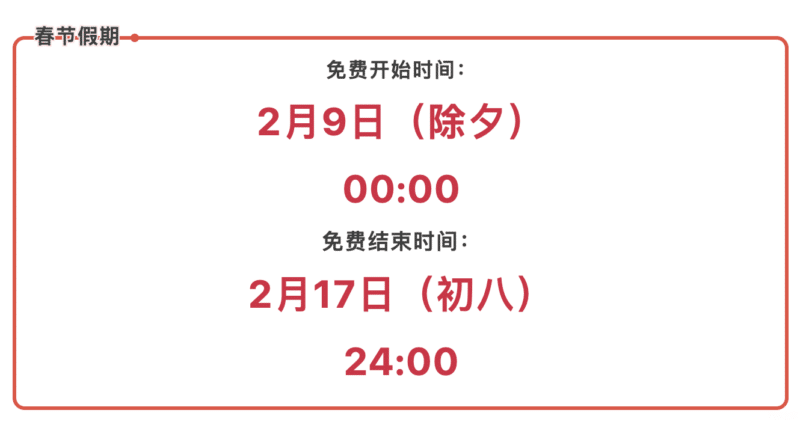
For EV drivers charging has of course been one of the biggest talking points. One social media account reported dozens of vehicles waiting to charge at the Dasheng service area on the highway around Yongzhou City, Hunan Province and the problem made worse by some vehicles cutting in the line. Such incidents have led to physical fights over chargers in the past.
Zeekr came in for praise from bloggers. Not only have they opened 888 charging stations across the country but they’re also providing mobile charging vehicles at some of the busiest service stations. From February 4th to February 8th and from February 16th to February 20th, charging vehicles will be stationed in six highway service areas in Beijing, Shanghai, Guangzhou, Shenzhen, Hangzhou and Chengdu. Zeekr owners can receive 1 hour free charging from them.
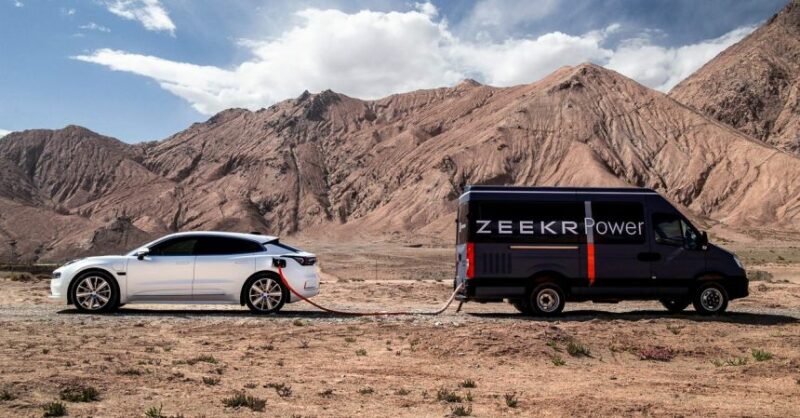
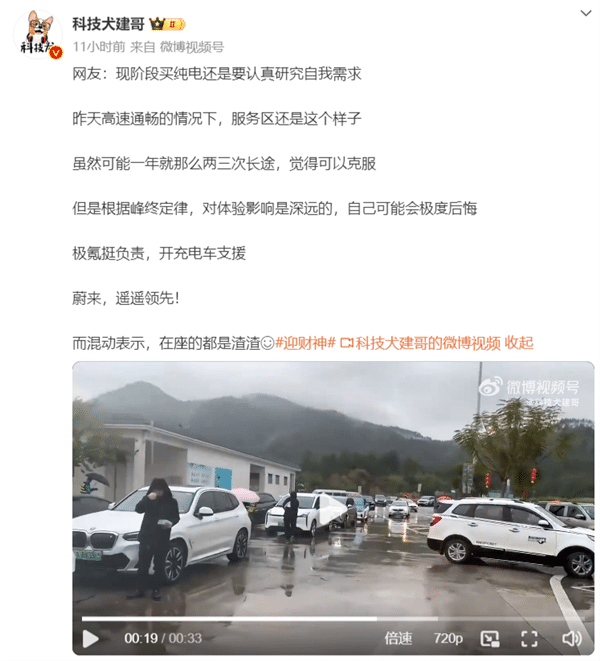


Many NEV companies got into the giving spirit of CNY with free charging for their customers. Li Auto announced on February 1 that 330 of its supercharger stations would give free charging (both service fee and electricity fee) to Li Auto owners between February 9 and 17. Some bloggers noted a lot of Nio cars were using Li Auto chargers. This caught the eye of CEO Li Xiang who responded that a charging station is a business, not a charity, and that all people are customers. The drivers of other brands needed to pay as normal during the holiday period for Li Auto chargers.
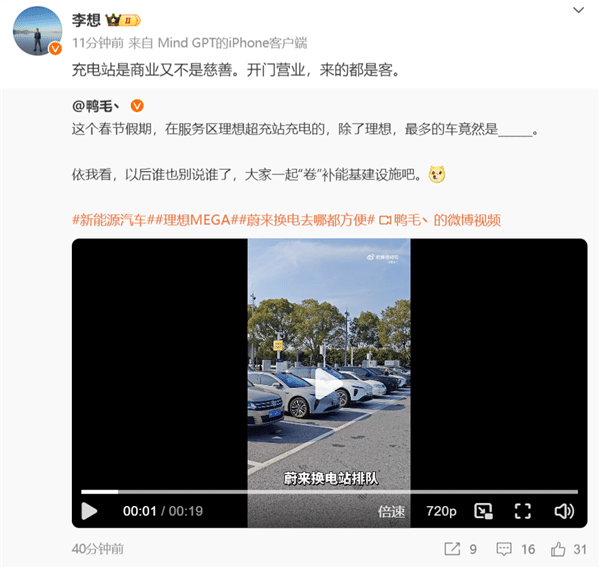
Perhaps Nio owners were using Li chargers because BYD owners were hogging the Nio chargers. An owner of a Leopard 5 (Fangchengbao bao 5) thanked Nio for its charger at one service station he entered where all the State Grid ones were fully occupied. He also found the cost to be cheaper than the State Grid at 1.065 yuan per kWh versus 1.42 yuan at State Grid. Furthermore he noted that the speed was really fast. Last year during CNY Nio’s chargers were used over 900,000 times and 76% of those times were by owners of cars other than Nio with BYD (17.6%) and Tesla (15.8%) accounting for the most.
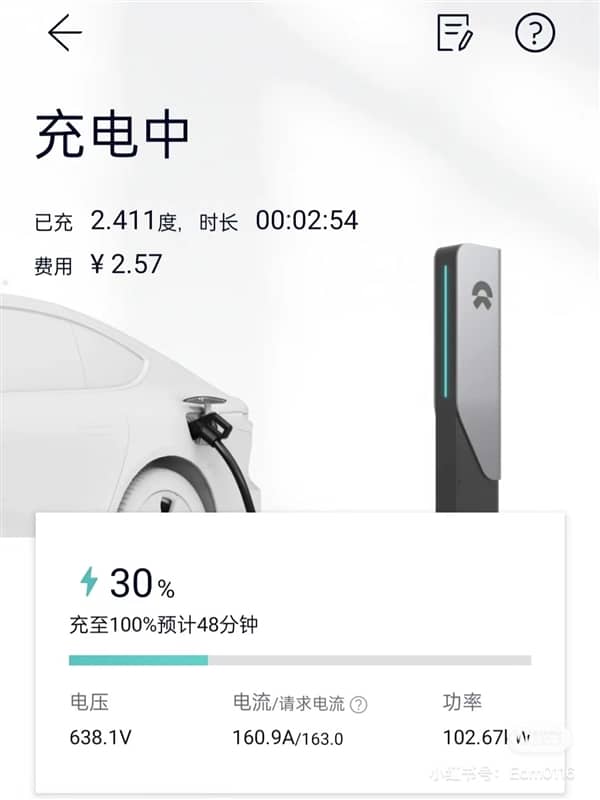
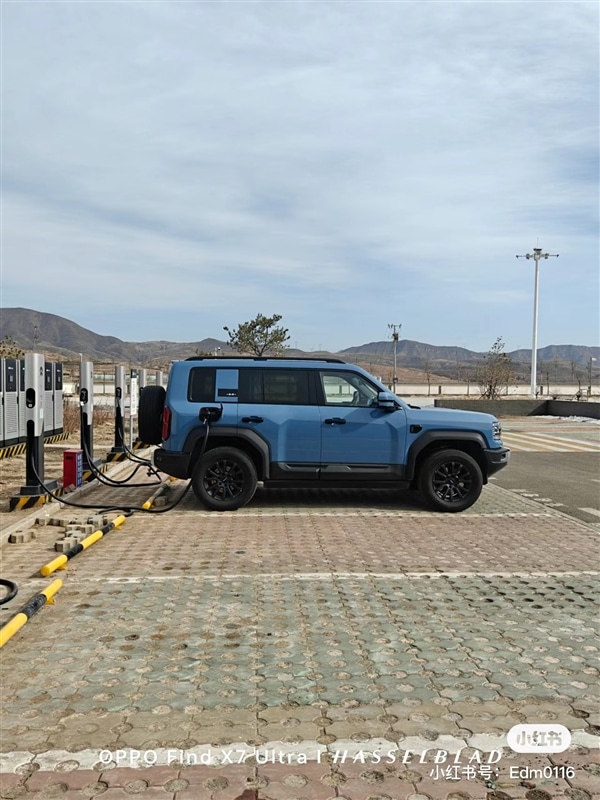
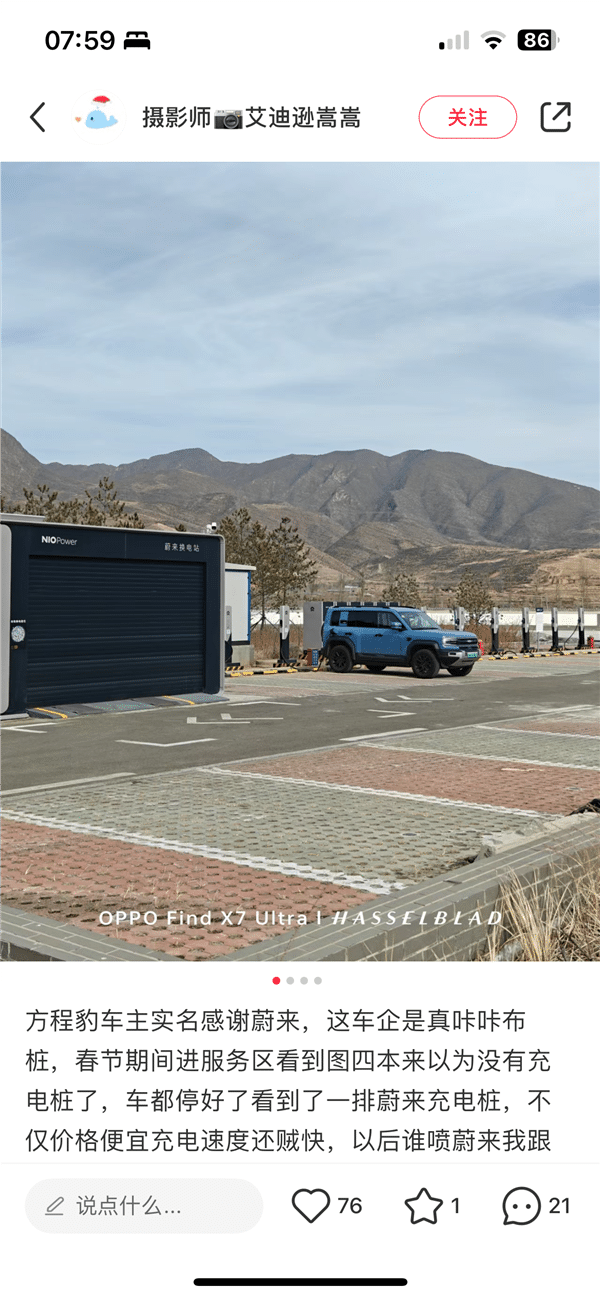
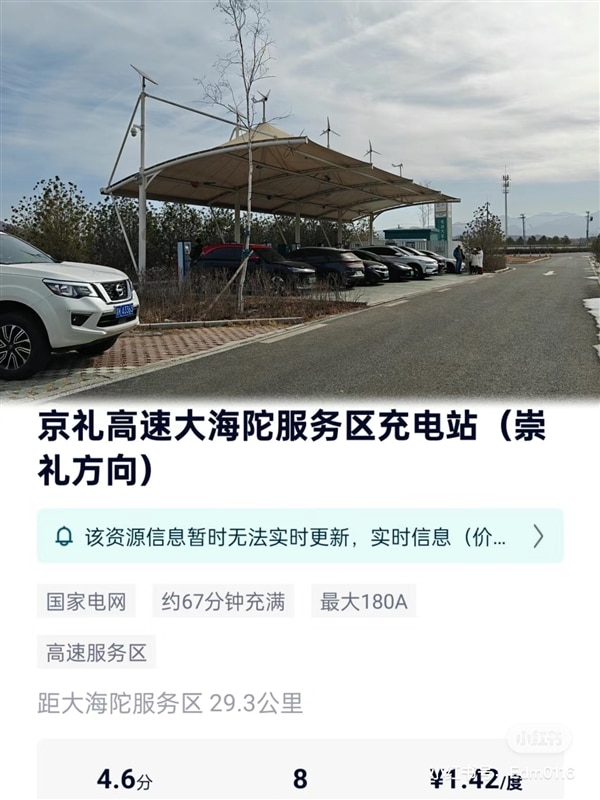
Nio seemed to be getting a lot of coverage during the period. Going around Weibo was a tweet that if you see another Nio on the highway you’d better overtake it so as to get ahead in the queue for the swap station.
One of the most unfortunate stories to catch our attention was of a lady driving her car back from Shenzhen to Wuhan who had to spend the night in a car just 5 meters from a charger. She left on February 1 and charged six times during the trip arriving in Hubei (Wuhan is the capital of Hubei Provice) around midday on February 3. That day there was large amounts of snow and freezing rain in Hubei. After getting to 5 meters of a charger at a service station the car was unable to get closer due to the snow despite the efforts of other drivers to help push the car. She ended up having to spend the night in another person’s car to stay warm before managing to get a shovel to dig her way to the charger early the next morning.
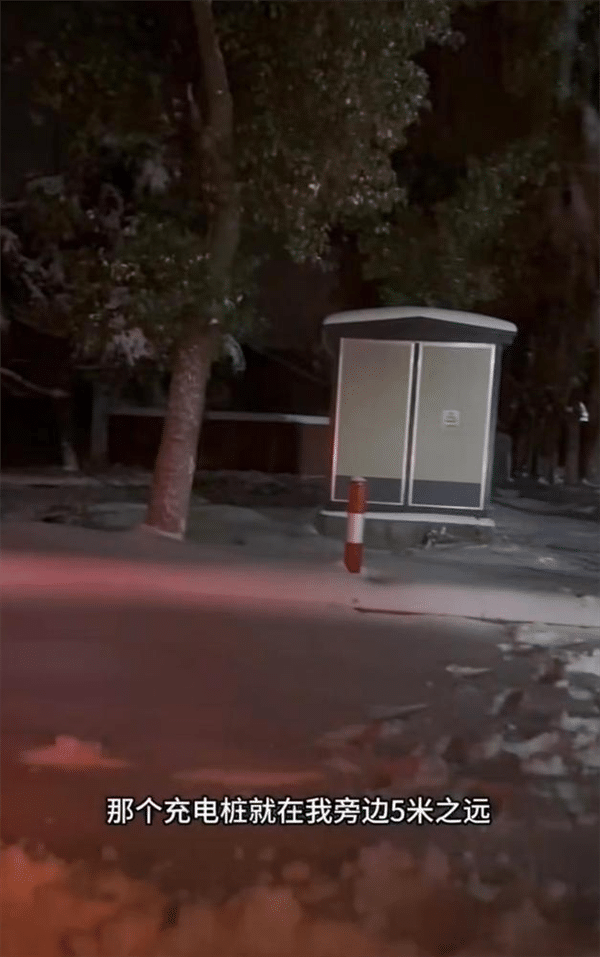
After all the charging problems there was a rather long post on Popular Science China’s WeChat account extolling the virtues of PHEV especially the series type usually these days referred to as extended range (EREV). The author believes that they will become increasingly popular and as evidence says that in January 2023 they only made up 6% of NEV sales but in December the proportion had nearly doubled to 11.2%.
And if you think all the drama was over once drivers reached their hometowns, think again. Many drivers of Chinese branded NEVs faced ridicule once they arrived back in their villages. A lot of people in more rural areas were unable to distinguish more expensive offerings from more generic cars. For example Nio owners were asked why they drove a 70,000 yuan JAC – until recently Nio cars carried the JAC name on the back due to the production JV.
It seems that people hoping to escape weather woes in tropical Hainan have not been exempt from NEV misery. Currently hundreds are trapped on the island due to a quota system which limits the number of NEVs on each ferry off the island to 10% of the total vehicles up to a total of 18 per sailing. Hainan Provincial Department of Transportation responded that these regulations are to reduce the fire risk on the ships. Reportedly a total of over 20,000 cars were booked to leave on February 17. Many drivers have been forced to abandon their cars in order to get back to the Chinese mainland. In response a number of NEV producers are offering to ship cars back free of charge when shipping returns to more normal conditions. So far brands offering this include Chang’an Qiyuan, Geely Galaxy, Denza, Neta and GAC Aion Hyper.
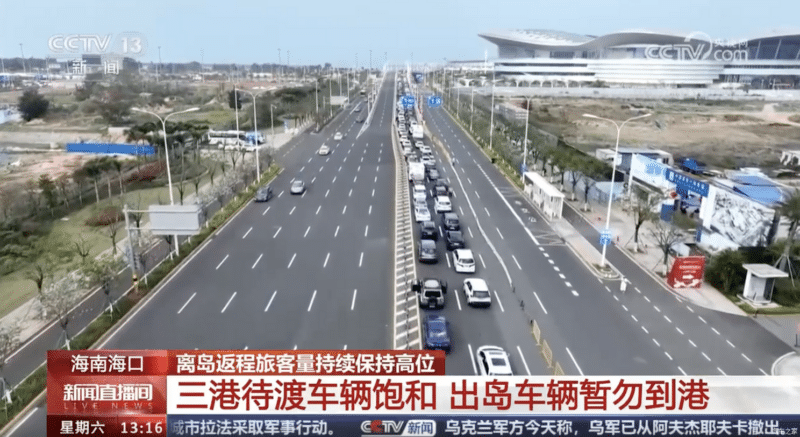
Editor’s note:
First of all we wish those still driving back to their work places a safe journey. Secondly there is a lot to digest in the stories emerging.
Perhaps the biggest is how the highway charging infrastructure is still far from adequate. It’s largely dominated by State Grid which began putting in chargers around 2015. Each service station initially seems to have got four chargers and this generally doesn’t seem to have increased – as evidenced by the pictures here. Back in 2021 I took part in a leg of the Shenzhen to Beijing XPeng NGP drive. In a fleet of around 13 XPeng P7s we called in at Yancheng Lake services on the highway between Shanghai and Nanjing. The services has parking for at least 200 cars but only had 4 chargers. XPeng had to bring in a generator in order to help charge the fleet and we also caused a lot of problems for other drivers wanting to charge their cars.
It would seem that with the increase in number of NEVs that the existing infrastructure is strained even in normal times and while China has a lot of charging places they are often of the wrong type in the wrong places. I have seen many in the middle of nowhere overgrown.
China Southern Power Grid responded to the CNY rush with mobile chargers covering some service centers in Guangxi, Yunnan, Sichuan, and Guangdong. Fast Technology reports that the chargers have 141 kWh capacity with maximum power output of 90 kW, supposedly 50% faster than the existing high-speed chargers. However this is not really a solution when each only can only meet the needs of 3 or 4 cars and judging by the pictures not simultaneously. Then how many have actually been deployed does not appear to have been disclosed. Plus how are they recharged once they have been emptied presumably they will have to occupy one of the already scarce chargers.
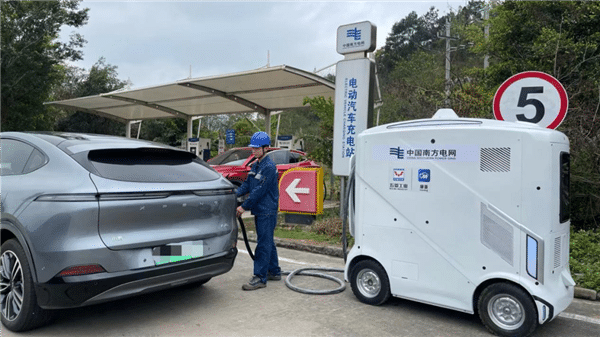
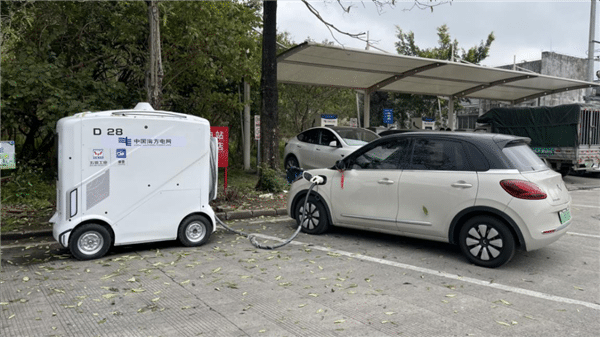
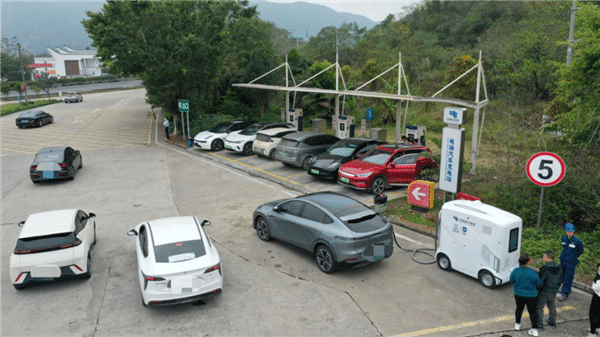
When highway driving it is likely that cars will need to charge every two to three hours. While it is common now in China for EVs to have more than 600 km range this is a CLTC figure which is meant to be based on typical usage in China – that translates as a bias for city driving. Highway driving where the speed limit is 120 km/h but speeds may in reality be up to 140 km/h will significantly reduce the potential range as will the cold weather experienced during CNY. Further increasing the need for charging is that a typical fast charging time of half an hour is based on a 30-80% state of charge cutting into the potential range even further.
The experience of those driving back this year might well impact upon NEV take up or as the Popular Science China article suggest push them to buy EREV rather than fully electric cars.
Furthermore there still seems to be a huge divide between the more developed cities and the rest of the country with knowledge about such cars and brand recognition. It must be quite difficult for owners of expensive NEVs to maintain face when more rural people are still impressed by premium foreign brands.



